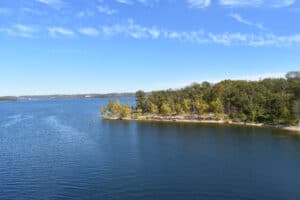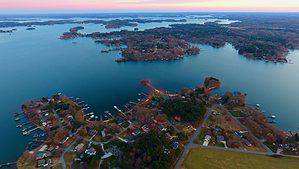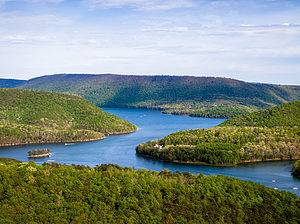Most of the world’s drinkable water is contained in freshwater lakes. Although it may seem like the amount of freshwater is small compared to saltwater, and it is, there is still a lot of fresh water in the world. To help you better understand the presence of fresh water in the world, we’re going to look at the 12 largest freshwater lakes in the world. These are the largest bodies of water that are not brackish or saline!

What Are Freshwater Lakes?
Freshwater lakes are lakes that contain freshwater that is neither brackish nor saline. While we’re on the topic, we have to ask another question: what is a lake? A lake is a body of water that has the following qualities:
- Depth: Lakes are deeper than ponds, reaching at least 20 feet in depth in most cases.
- Shape: Lakes have a more oval-like shape than ponds
- Water Type: Lakes are mostly freshwater, but they can also be brackish or saline. Ponds are solely freshwater.
- Open outlet: Lakes have an opening to other bodies of water from which they derive their water.
- Size: Lakes are typically larger than 0.3 square miles.
Lakes are very distinct from ponds because they are larger, have an open outlet, and have a certain depth.
The 12 Largest Freshwater Lakes in the World
The lakes on our list will vary from about the size of New Jersey all the way up to Great Lakes which are more than 20,000 square miles. Let’s dive into the 12 largest freshwater lakes in the world!
12. Lake Ontario
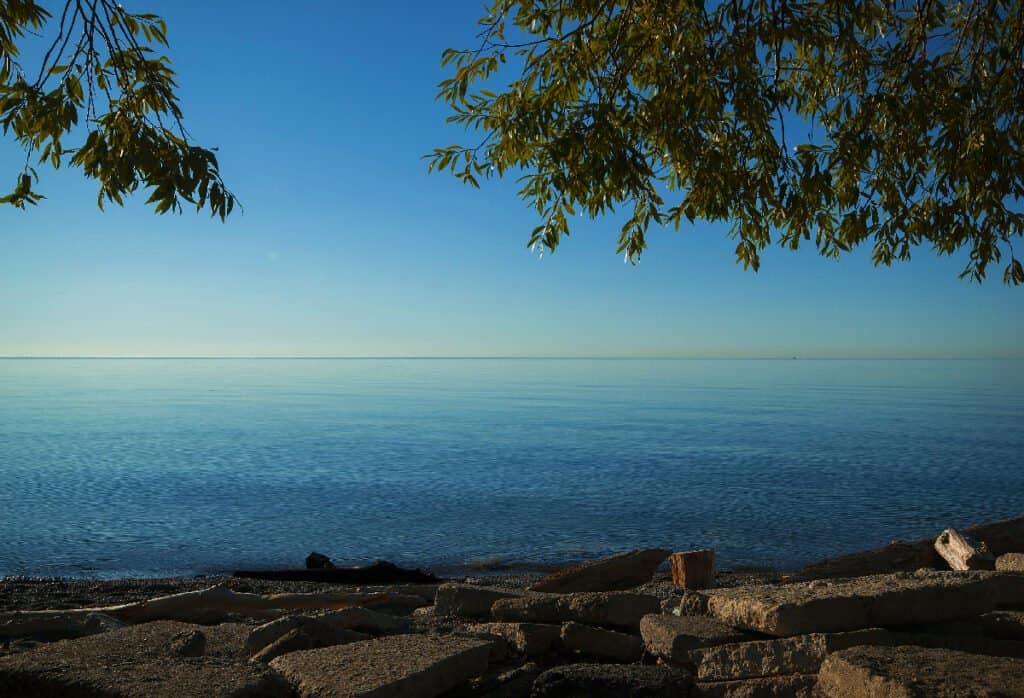
Lake Ontario is the smallest Great Lake
©Michael J. Eves/Shutterstock.com
| Area | Length | Depth | Volume |
| 18,960 km2 7,320 sq mi | 311 km 193 mi | 244 m 801 ft | 1,639 km3 393 cu mi |
Lake Ontario is the smallest one of the Great Lakes by area alone. However, it does have significant depth and volume compared to some of the other Great Lakes. This lake is known for being a tourist attraction and a place that swimmers frequent during the warmer months. Like many other Great Lakes, this lake borders both the United States and Canada.
11. Lake Winnipeg
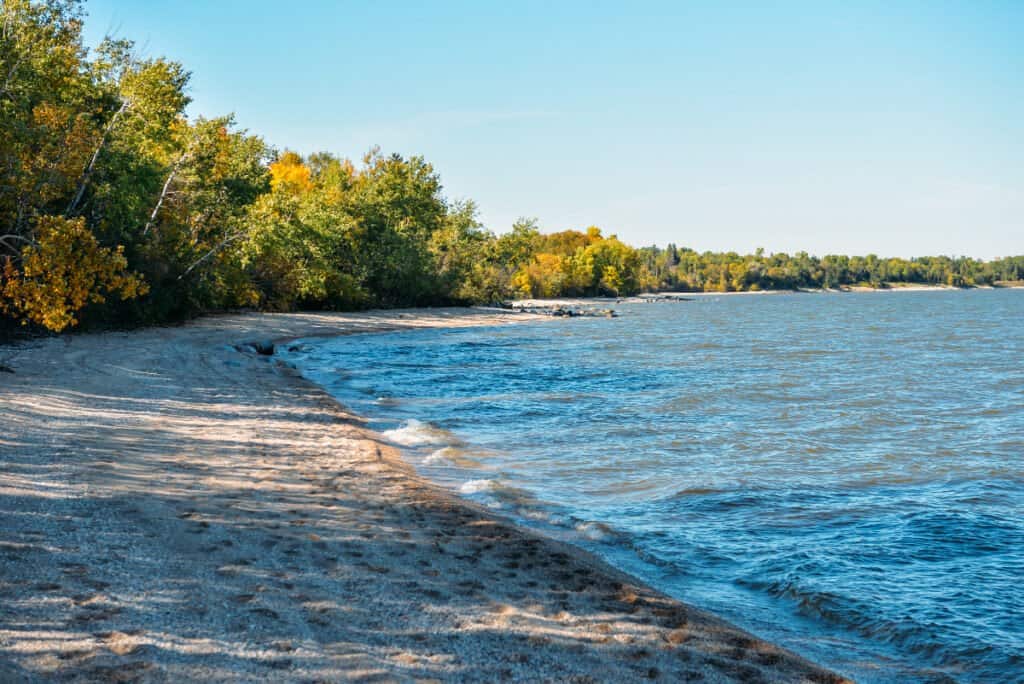
Lake Winnipeg is the third-largest freshwater lake that is only in Canada
©lastdjedai/Shutterstock.com
| Area | Length | Depth | Volume |
| 24,514 km2 9,465 sq mi | 425 km 264 mi | 36 m 118 ft | 283 km3 68 cu mi |
Lake Winnipeg is a large lake that only lies in the country of Canada. The lake is a remnant of a former glacier, and many forms of wildlife live in the area. This freshwater lake is known for having the largest lake watershed of any in Canada, and it even receives water from various states in the U.S. Its watershed is almost 400,000 square miles!
10. Lake Erie
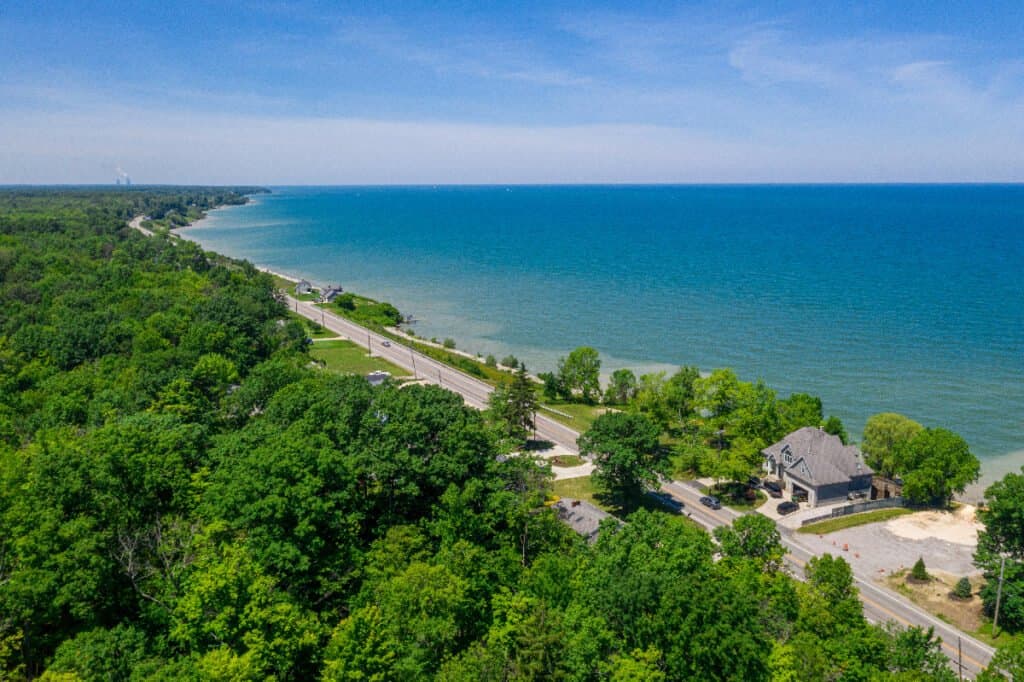
Lake Erie is the least voluminous of all the Great Lakes
©IanSkylake17/Shutterstock.com
| Area | Length | Depth | Volume |
| 25,700 km2 9,900 sq mi | 388 km 241 mi | 64 m 210 ft | 489 km3 117 cu mi |
Lake Erie is one of the Great Lakes, and it shares a shoreline with the United States and Canada. In terms of volume, Lake Erie is the smallest of all the Great Lakes, but it has a larger area than Lake Ontario. A large portion of this lake freezes over every year, so people come from far away to enjoy the scenery.
9. Great Slave Lake
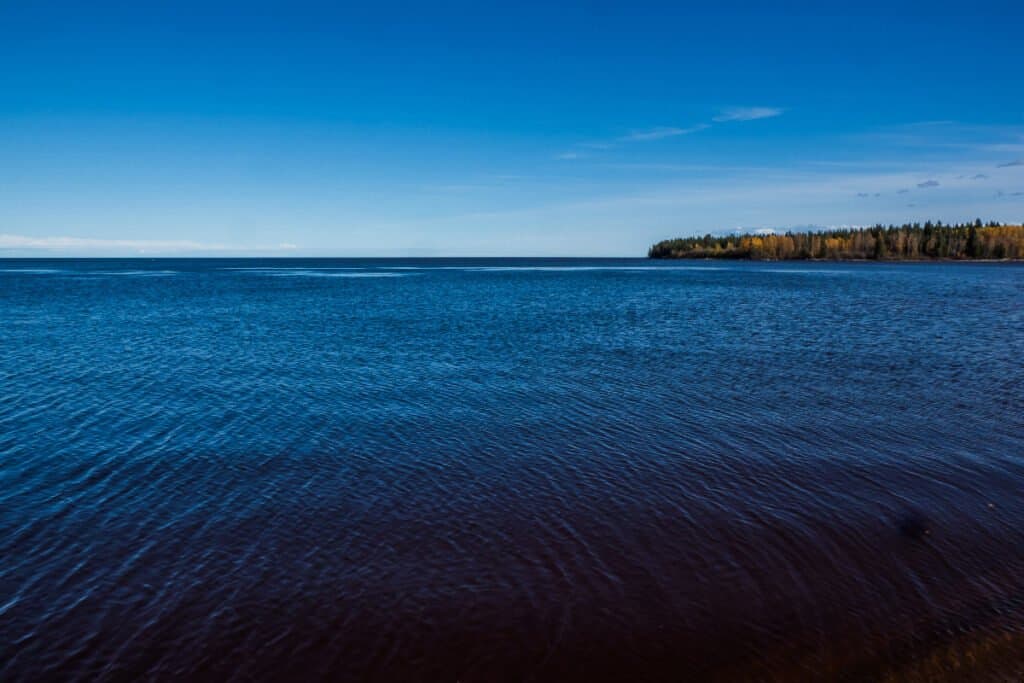
The Great Slave Lake is the deepest lake in North America
©norikko/Shutterstock.com
| Area | Length | Depth | Volume |
| 27,000 km2 10,000 sq mi | 480 km 300 mi | 614 m 2,014 ft | 1,560 km3 370 cu mi |
The Great Slave Lake is a lake with a very unfortunate name that originates from the days of the fur trade in the 18th century. The name refers to the Cree enslavement of other tribes. The lake is located in the far northern reaches of Canada, and it’s known for being the deepest lake in all of North America at a depth of some 2,014 feet! The lake is known for being the location of Operation Morning Light, a recovery of nuclear materials.
8. Lake Malawi
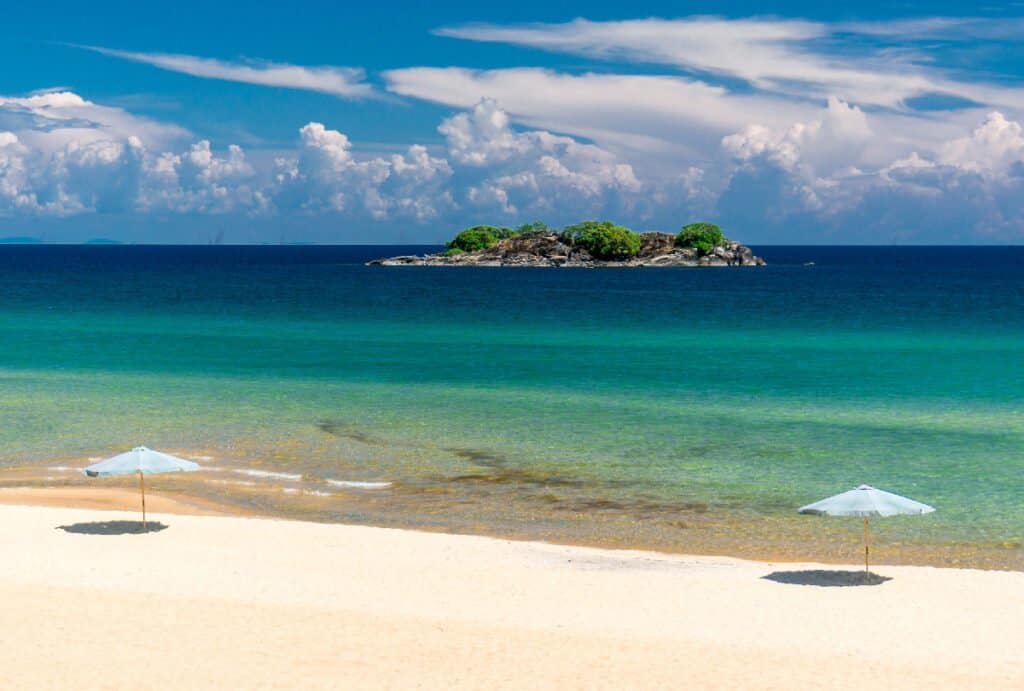
Lake Malawi has more species of fish than any other lake in the world
©Scott Biales DitchTheMap/Shutterstock.com
| Area | Length | Depth | Volume |
| 29,500 km2 11,400 sq mi | 579 km 360 mi | 706 m 2,316 ft | 8,400 km3 2,000 cu mi |
Located in Mozambique, Malawi, and Tanzania, Lake Malawi is an important freshwater lake for drinking water and transportation. Lake Malawi has more species of fish living in it than any other lake in the world. An interesting tidbit about this lake was that it was the site of Britain’s first naval battle in World War I. Also, it’s a meromictic lake, and that means its different layers of water do not mix.
7. Great Bear Lake
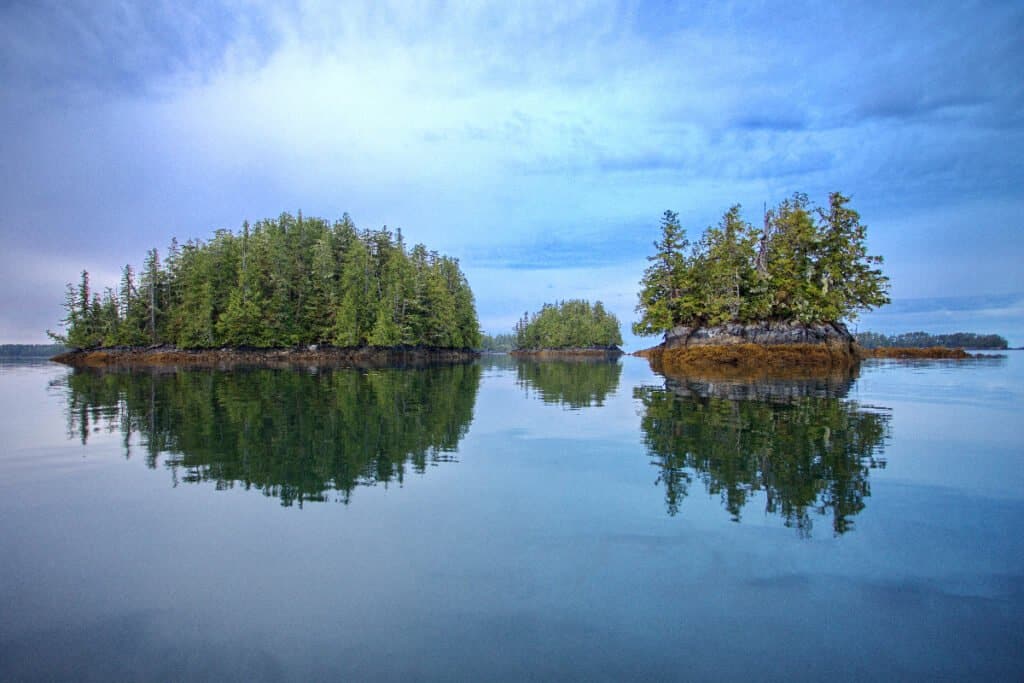
The Great Bear Lake is the biggest in Canada overall
©Kevin Lings/Shutterstock.com
| Area | Length | Depth | Volume |
| 31,000 km2 12,000 sq mi | 373 km 232 mi | 446 m 1,463 ft | 2,236 km3 536 cu mi |
The Great Bear Lake is another massive lake located in northern Canada. This is the largest lake that is located entirely within the nation of Canada. The lake is surrounded by a massive forest. This lake is known for having a section of an ice crossing located on the lake. The lake is known for its large area and depth.
6. Lake Baikal
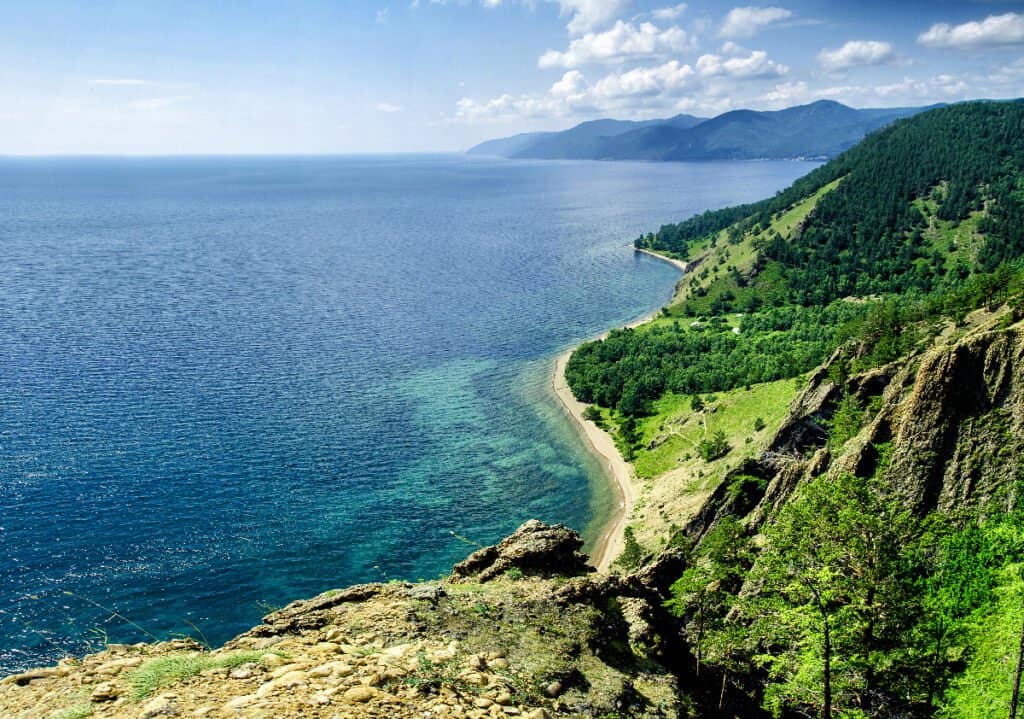
Lake Baikal is the deepest lake in the world
©Julia Kuzenkova/Shutterstock.com
| Area | Length | Depth | Volume |
| 31,500 km2 12,200 sq mi | 636 km 395 mi | 1,637 m 5,371 ft | 23,600 km3 5,700 cu mi |
Lake Baikal is known for being the world’s deepest lake, with a maximum depth that exceeds 5,000 feet. The lake is located in Siberia, Russia, making it a rather remote but also important tourist destination. Several villages are near Lake Baikal, and they serve as ecotourism destinations for people that want to see unique ice formations and hike in pristine nature. However, the lake is beginning to suffer from pollution in the form of algae blooms, liquid waste, and more.
5. Lake Tanganyika
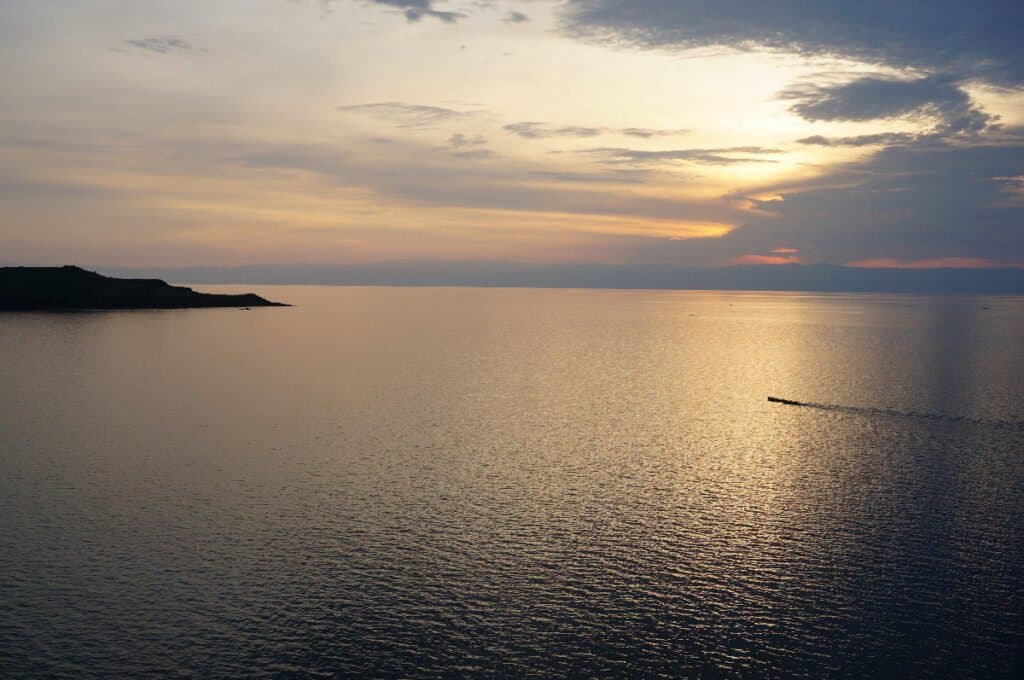
Lake Tanganyika is the world’s longest freshwater lake, and it has shorelines in four countries
©Naoki Kakuta/Shutterstock.com
| Area | Length | Depth | Volume |
| 32,600 km2 12,600 sq mi | 676 km 420 mi | 1,470 m 4,820 ft | 18,900 km3 4,500 cu mi |
Lake Tanganyika is the second-largest freshwater lake by volume alone, only falling behind Lake Baikal. This is also the world’s longest freshwater lake, reaching lengths of over 400 miles. The lake is located in Tanzania, Burundi, the Democratic Republic of the Congo, and Zambia. Lake Tanganyika is incredibly important in terms of ecology and biology.
4. Lake Michigan
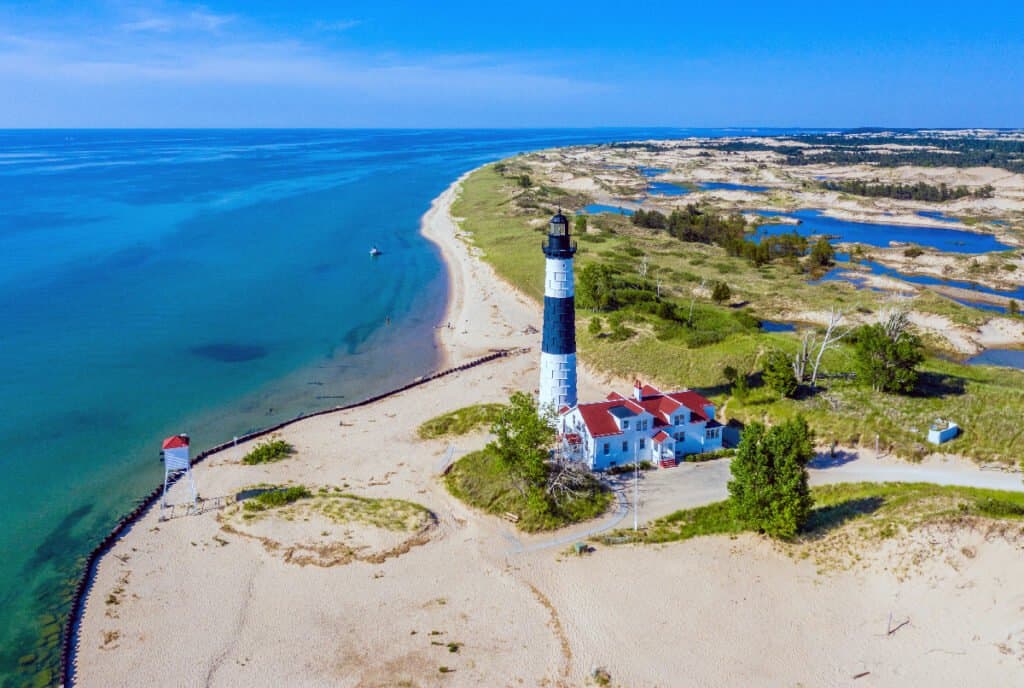
Lake Michigan is the largest lake in the United States
©Frederick Millett/Shutterstock.com
| Area | Length | Depth | Volume |
| 58,000 km2 22,000 sq mi | 494 km 307 mi | 281 m 922 ft | 4,900 km3 1,200 cu mi |
Lake Michigan is the largest lake located wholly in the United States. This lake can be considered the same as Lake Huron which lies to its east and is joined by the Straits of Mackinac. However, these two lakes are often considered separate. The lake is massive and serves as a source of drinking water for people all along the borders of the lake. The lake is also the home of commercial fisheries and shipping outcomes.
3. Lake Huron
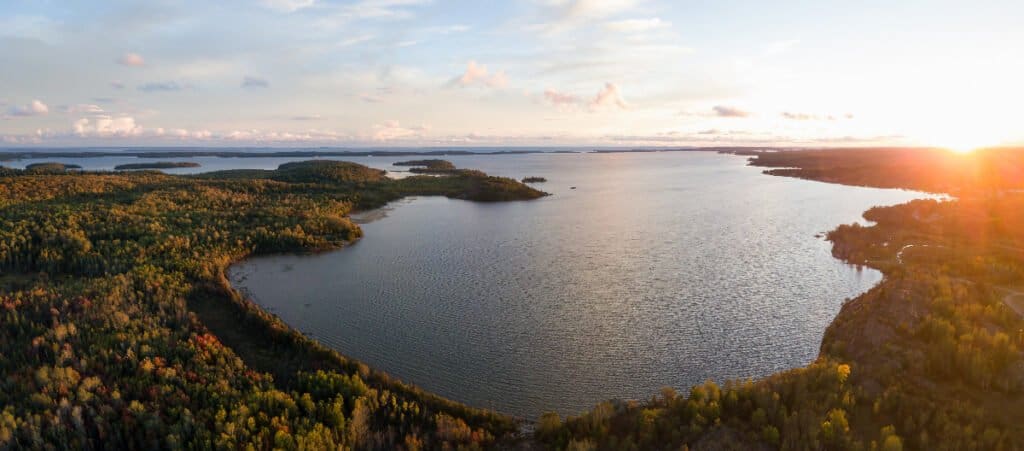
Lake Huron is known for its rough waters and over a thousand shipwrecks are concealed in its depths
©EB Adventure Photography/Shutterstock.com
| Area | Length | Depth | Volume |
| 59,600 km2 23,000 sq mi | 332 km 206 mi | 229 m 751 ft | 3,540 km3 850 cu mi |
Lake Huron is one of the Great Lakes in the United States, and it is becoming more commonly considered as a single lake along with Lake Michigan. However, as an individual lake, it’s the third-largest freshwater lake in the world. The lake is known for its treacherous waters and the fact that over 1,000 shipwrecks are present in the waters.
2. Lake Victoria
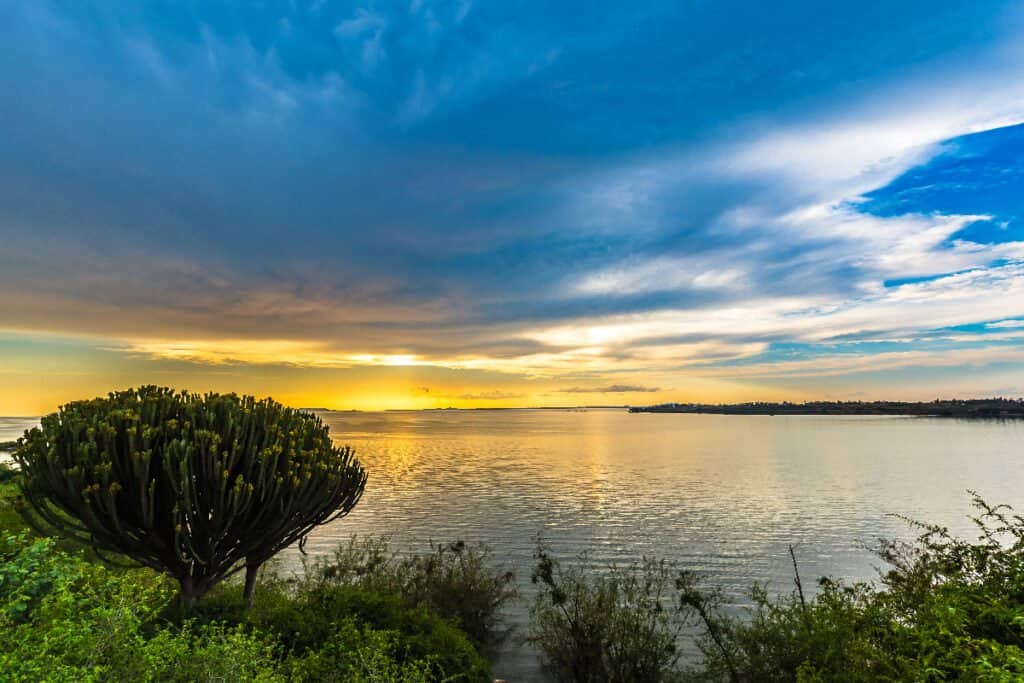
Lake Victoria is a shallow yet massive lake, the largest in
Africa
©Stefan Haider/Shutterstock.com
| Area | Length | Depth | Volume |
| 68,870 km2 26,590 sq mi | 322 km 200 mi | 84 m 276 ft | 2,750 km3 660 cu mi |
Lake Victoria is the largest lake in Africa, and it’s considered one of the African Great Lakes. The lake is located in Kenya, Uganda, and Tanzania. The waters are home to unique species of fish that are not found anywhere else. The lake is somewhat shallow compared to the other largest lakes out there, but it’s also important for drinking water as well as transport.
1. Lake Superior
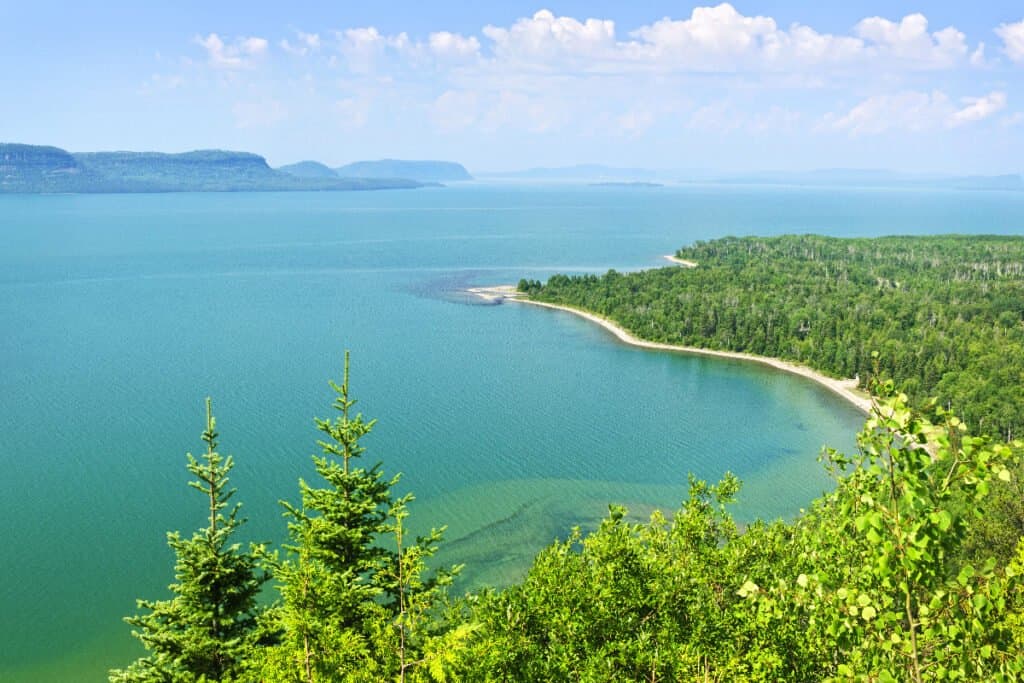
Lake Superior is the biggest freshwater lake in the world
©Elena Elisseeva/Shutterstock.com
| Area | Length | Depth | Volume |
| 82,100 km2 31,700 sq mi | 616 km 383 mi | 406 m 1,333 ft | 12,100 km3 2,900 cu mi |
Lake Superior is the largest freshwater lake in the world, reaching over 31,000 square miles in size and boasting a depth of 1,300 feet at its deepest point. This great lake is split between the United States and Canada. The lake became significant to the shipping of manufactured materials in the 19th century and also has many shipwrecks beneath its waves.
Honorable Mentions: More of the Largest Freshwater Lakes Worldwide
There are some lakes that didn’t make our cut but are noteworthy due to their size. Let’s look at a couple more below.
Lake Ladoga
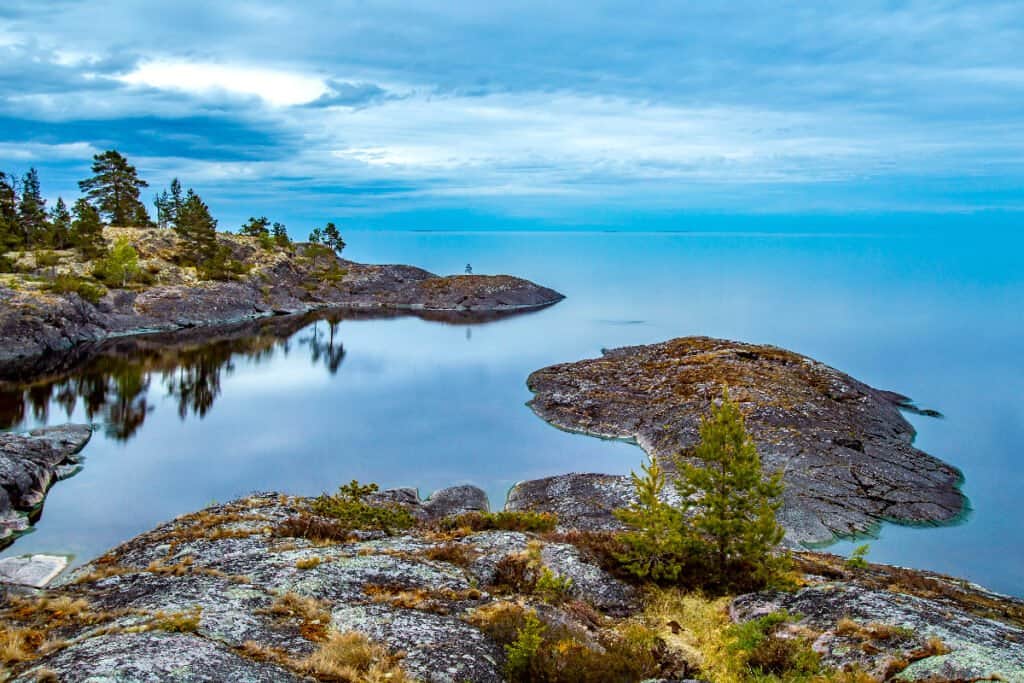
The Russian Lake Ladoga is comparable in size to Lake Ontario in the U.S.
©FOTOGRIN/Shutterstock.com
Lake Ladoga is among the largest freshwater lakes in the world, spanning 4,395,360 acres with 3,568 miles of shoreline. Its location is in northwestern Russia, close to the iconic city of St. Petersburg. Besides, fishing, boating, hiking, and camping, people also enjoy swimming and observing wildlife along its banks. Fishermen can cast out their hooks in hopes of snagging perch, smelt, vendace, salmon, or Atlantic surgeon in its depths. It also has a rich history dating back to the Middle Ages when the lake was part of a trading route during the Roman Empire.
Lake Balkhash
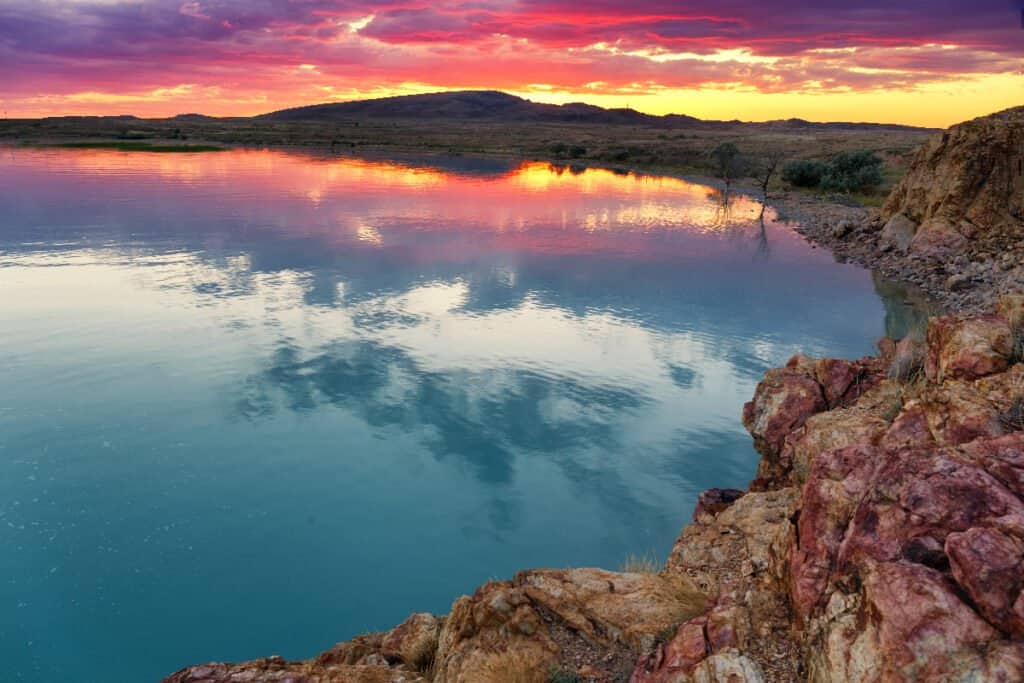
Lake Balkhash is within the top 15 largest freshwater lakes in the world.
©Maxim Petrichuk/Shutterstock.com
Lake Balkhash is unique in that its eastern part is freshwater, while a smaller area of its western part is saltwater. This massive lake spans 4,199,680 acres with shorelines running 2,152 miles. It’s located mostly in Kazakhstan with a small area spilling over into China. Besides being an economic resource for that region of the globe, Lake Balkhash offers lake lovers opportunities for fishing, boating, water sports, and nature watching. Perch is among the 20 native species inhabiting its cold waters.
Summary Of The 12 Largest Freshwater Lakes in the World
| Rank | Lake | Location | Area | Length | Depth | Volume |
|---|---|---|---|---|---|---|
| 12 | Lake Ontario | United States & Canada | 7,320 sq mi | 193 mi | 801 ft | 393 cu mi |
| 11 | Lake Winnipeg | Canada | 9,465 sq mi | 264 mi | 118 ft | 68 cu mi |
| 10 | Lake Erie | United States & Canada | 9,900 sq mi | 241 mi | 210 ft | 117 cu mi |
| 9 | Great Slave Lake | Northern Canada | 10,000 sq mi | 300 mi | 2,014 ft | 370 cu mi |
| 8 | Lake Malawi | Africa Mozambique, Malawi & Tanzania | 11,400 sq mi | 360 mi | 2,316 ft | 2,000 cu mi |
| 7 | Great Bear Lake | Northern Canada | 12,000 sq mi | 232 mi | 1,463 ft | 536 cu mi |
| 6 | Lake Baikal | Siberia, Russia | 12,200 sq mi | 395 mi | 5,371 ft | 5,700 cu mi |
| 5 | Lake Tanganyika | Africa Tanzania, Burundi, the Democratic Republic of the Congo, and Zambia | 12,600 sq mi | 420 mi | 4,820 ft | 4,500 cu mi |
| 4 | Lake Michigan | United States | 22,000 sq mi | 307 mi | 922 ft | 1,200 cu mi |
| 3 | Lake Huron | Michigan, United States & Canada | 23,000 sq mi | 206 mi | 751 ft | 850 cu mi |
| 2 | Lake Victoria | Africa Kenya, Uganda, & Tanzania | 26,590 sq mi | 200 mi | 276 ft | 660 cu mi |
| 1 | Lake Superior | United States & Canada | 31,700 sq mi | 383 mi | 1,333 ft | 2,900 cu mi |
What is the Largest Freshwater Lake in the World?
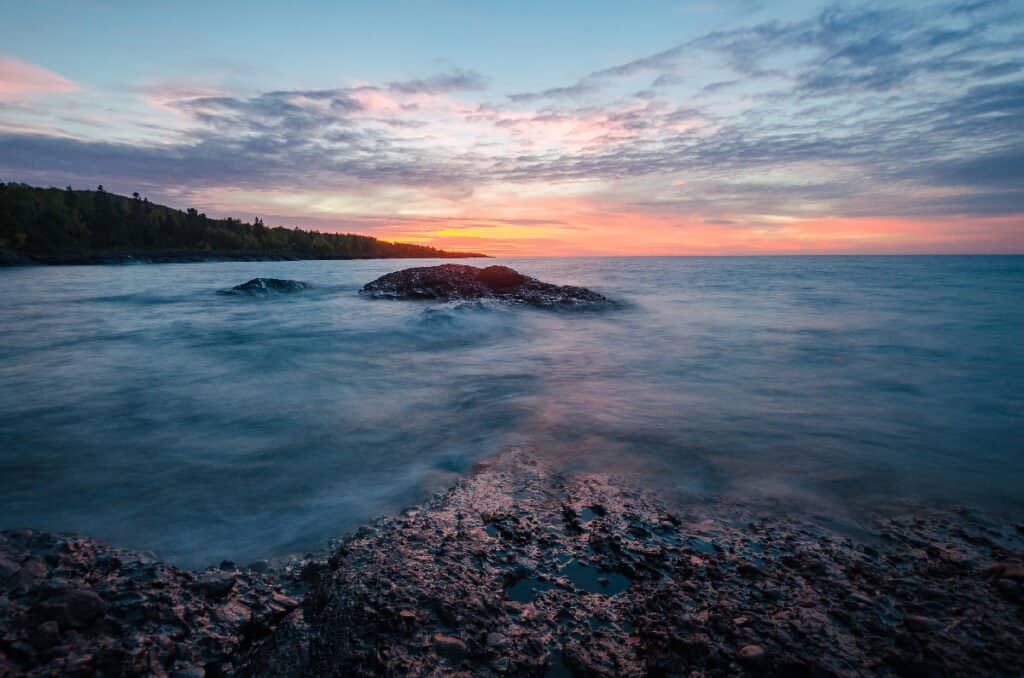
Lake Superior is the largest freshwater lake in the world with a surface area of over 31,000 miles.
©Sorayot Chinkanjanarot/Shutterstock.com
The largest freshwater lake in the world is Lake Superior. This lake has shorelines in both the U.S. and Canada. Although it has the greatest surface area of any freshwater lake, it does not have the same amount of volume as other lakes, like Baikal and Tanganyika.
What is the Largest Freshwater Lake in the United States?
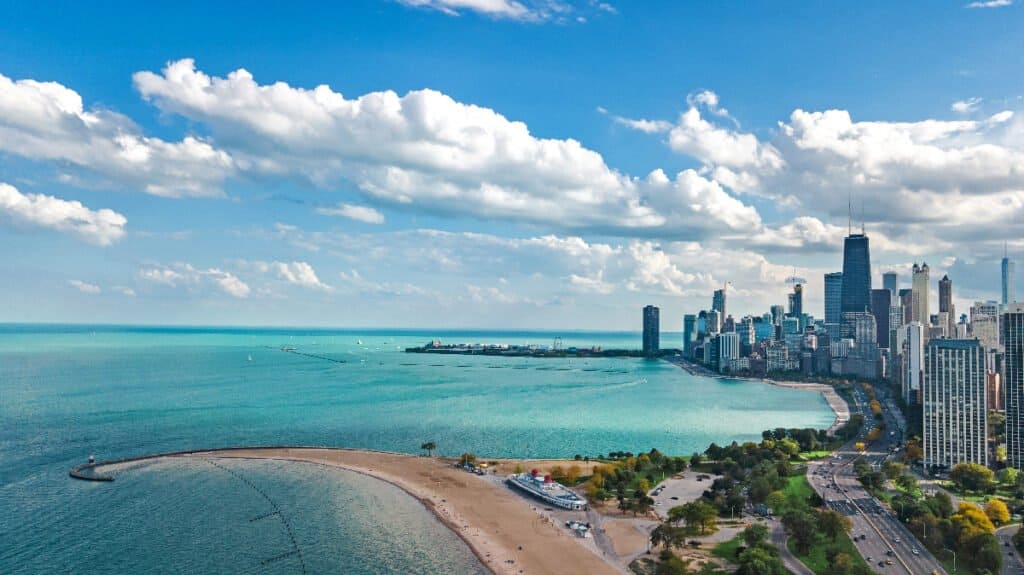
Lake Michigan is the largest lake located entirely in the United States
©JaySi/Shutterstock.com
The largest freshwater lake that is located entirely in the United States is Lake Michigan. This lake is often combined with Lake Huron when people are discussing the large body of water.
What is the Largest Lake in the World?
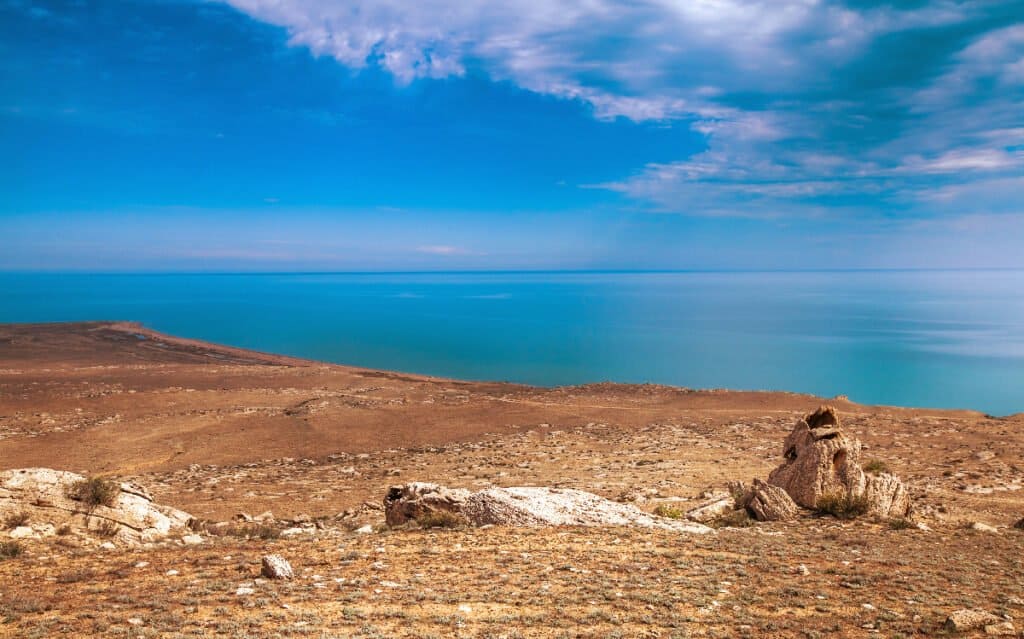
The Caspian Sea is the largest lake on the planet, however, it contains saltwater rather than freshwater
©Marina Khlybova/Shutterstock.com
The largest lake in the world is the Caspian Sea. This body of water is saline and not freshwater, though. It’s so large that it has been considered a sea, but it also meets the criteria of a lake. Thus, this is the largest saline lake, but it’s hardly the largest body of water that exists.
Final Thoughts on the Largest Freshwater Lakes in the World
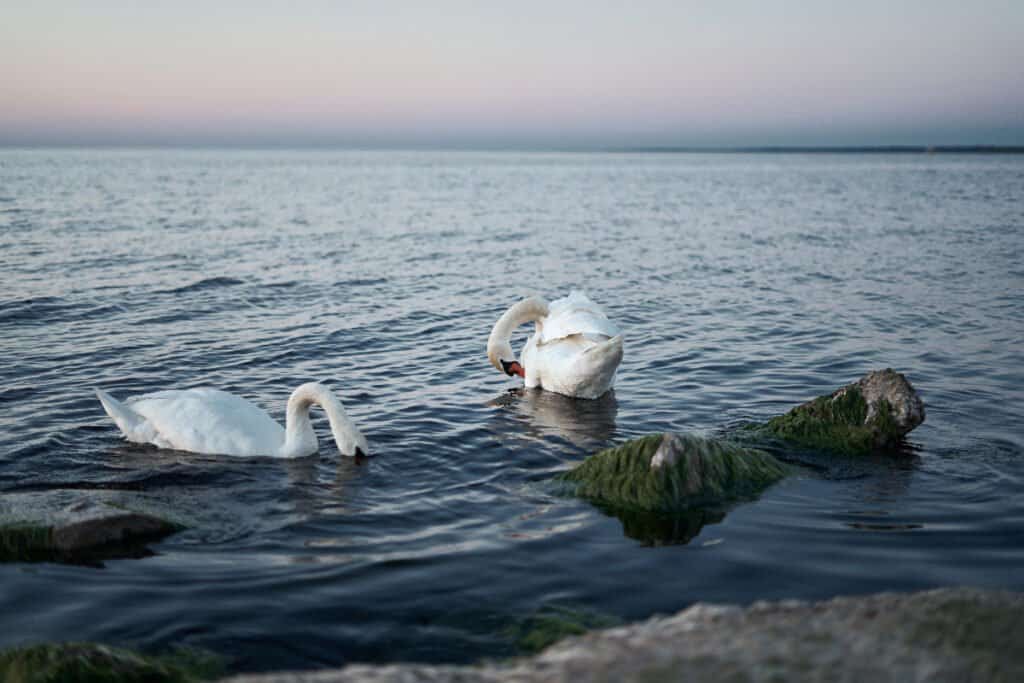
Freshwater lakes are important because they provide drinking water.
©OlegRi/Shutterstock.com
The freshwater lakes that we have discussed here are very important. They provide drinking water for millions upon millions of people. The largest freshwater lakes have served as locations upon which civilizations have been built. They continue to provide sources of drinking water, entertainment, and beauty for those that see them.
The photo featured at the top of this post is © norikko/Shutterstock.com
Thank you for reading! Have some feedback for us? Contact the AZ Animals editorial team.



